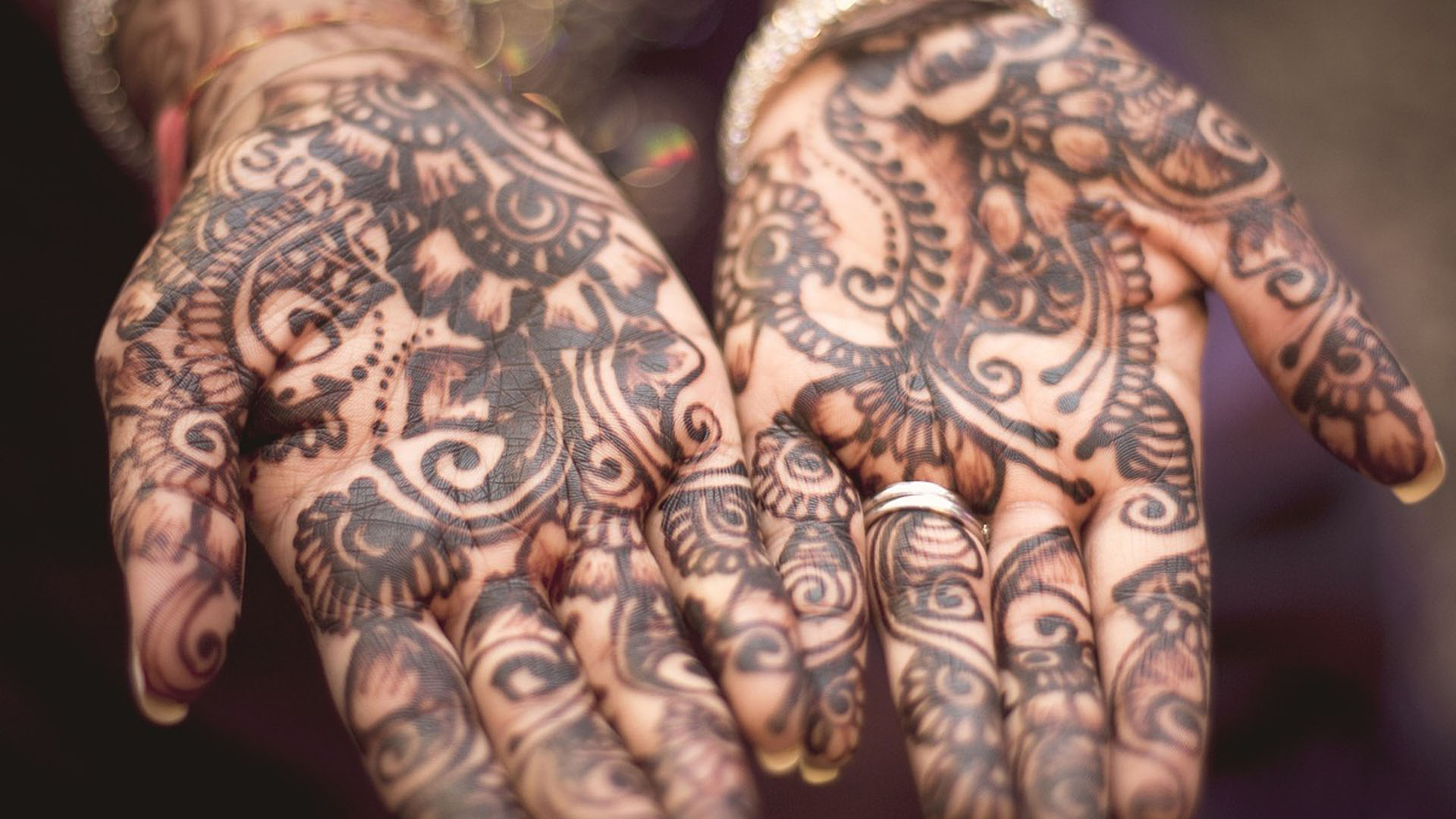
Henna, a natural dye made from the henna plant, has been used for centuries as a temporary tattoo in South Asia, North Africa, and the Middle East.
Henna is one of the few traditions that can transcend cultural and religious barriers, a wonder in today’s warring world. An art form applied to the hands and feet, it’s generally worn for cosmetic purposes––though some claim its benefits as a pain reliever and a sunscreen.
Brides are decorated with henna before their wedding. Hindus and Muslims adorn their hands with intricate designs to celebrate their many festivals. Superstitions also warrant henna applications. Hindus incorporate the “evil eye” to ward off demons. “Fatima’s hand,” named for one of Muhammad’s wives, is a popular design among Muslim women to invoke protection for mothers and children.
Due to henna’s proliferation across so many cultures and religions, Christian women began exploring it as a means to share the gospel. Starting in Africa, they created elaborate henna designs to depict Bible stories in hopes that these temporary tattoos would become conversation starters and a method by which they could train local women to share their faith.
This “gospel henna,” or henna stories, proved to be helpful in cultures where literacy was low, oral traditions were strong, and Bible translations in native languages were very hard to come by. Henna stories also were designed as mnemonic devices to help new believers (often illiterate or without a Bible in their language) to memorize and share Scripture.
Henna stories have opened the door for Addison Abrams,* a Christian in South Asia, to share the gospel in a Muslim neighborhood.
“I just take the symbols that are already really common and work them into our stories,” Abrams says. She does take some creative license to design new symbols that depict biblical stories and their key themes, such as sin, Jesus, and forgiveness.
What began as a fascination with other cultures’ traditions has become a method many US women employ to share with their own communities.
Families from slums often come to parks for picnics on the weekend, so Abrams takes that opportunity to draw henna designs on many of the women’s palms. Whether the women believe or not, they take the designs and the stories back to their homes on the palms of their hands. Henna dye can last up to seven days on skin, which means each application gets a week’s worth of attention.
Henna stories also have made their way into the hands of the US church. What began as a fascination with other cultures’ traditions has become a method many US women employ to share with their own communities. As popularity for henna storying grows, so do the concerns from cautious advocates.
Many suggest that henna is best used as a bridge to South Asian, Hindu, Muslim, and North African women rather than to other US women. Some are using it as a conversation starter with other Western women, which is fine as a secondary use, but primarily it works best as both a spiritual and cultural bridge to international women living in the United States. When they see something so endearing from their home culture, they typically respond positively because it reminds them of home. This opens the door to talk to them as people before talking to them as “ministry opportunities.”
What to Consider Before Applying Henna to a Western Context
If you are interested in using henna as a bridge to the gospel, make sure you come to the conversation ready to answer three concerns:
1. Is this too cheesy and kitschy to be effective?
Not if your primary audience is international women. Don’t think of this or market this like a new version of the colored-beads bracelets we saw in the 90s. There are henna designs that share the macro-narrative of Scripture (like the bracelets did), but generally, henna materials (like the ones found at hennastories.org) are designed to share many Bible stories, not just one again and again.
2. Is henna pagan?
Henna is sometimes used in Hindu ceremonies, but the fact that both Muslim and Hindu women use it freely and without qualm strongly indicates that henna is not an inherently Hindu practice. Henna is one of the few cultural commonalities between Muslim and Hindu women, who historically have had a tense relationship. The vast majority of henna designs have no more religious connotations than does your average manicure. It’s just pretty. Evergreen trees for Christmas and eggs for Easter are far more pagan than henna.
3. Is this cultural appropriation?
Keep in mind the difference between cultural appropriation and cultural contextualization. Appropriation is about adopting a cultural artifact or practice as your own without giving the origin culture proper credit. Think of it as cultural plagiarism, which can be offensive for cultures that have seen their practices exploited for personal gain. This is another reason to use henna primarily to connect with international women, as opposed to US women.
Appropriation is about making yourself look good. Contextualization is about making yourself uncomfortable for others’ good. It’s about entering into a new and unfamiliar culture with a posture of celebrating and understanding all that is good in that culture.
Visit hennastories.org for design ideas and tips for how to use henna to share with South Asians, North Africans, and Middle Easterners.
*Name changed

